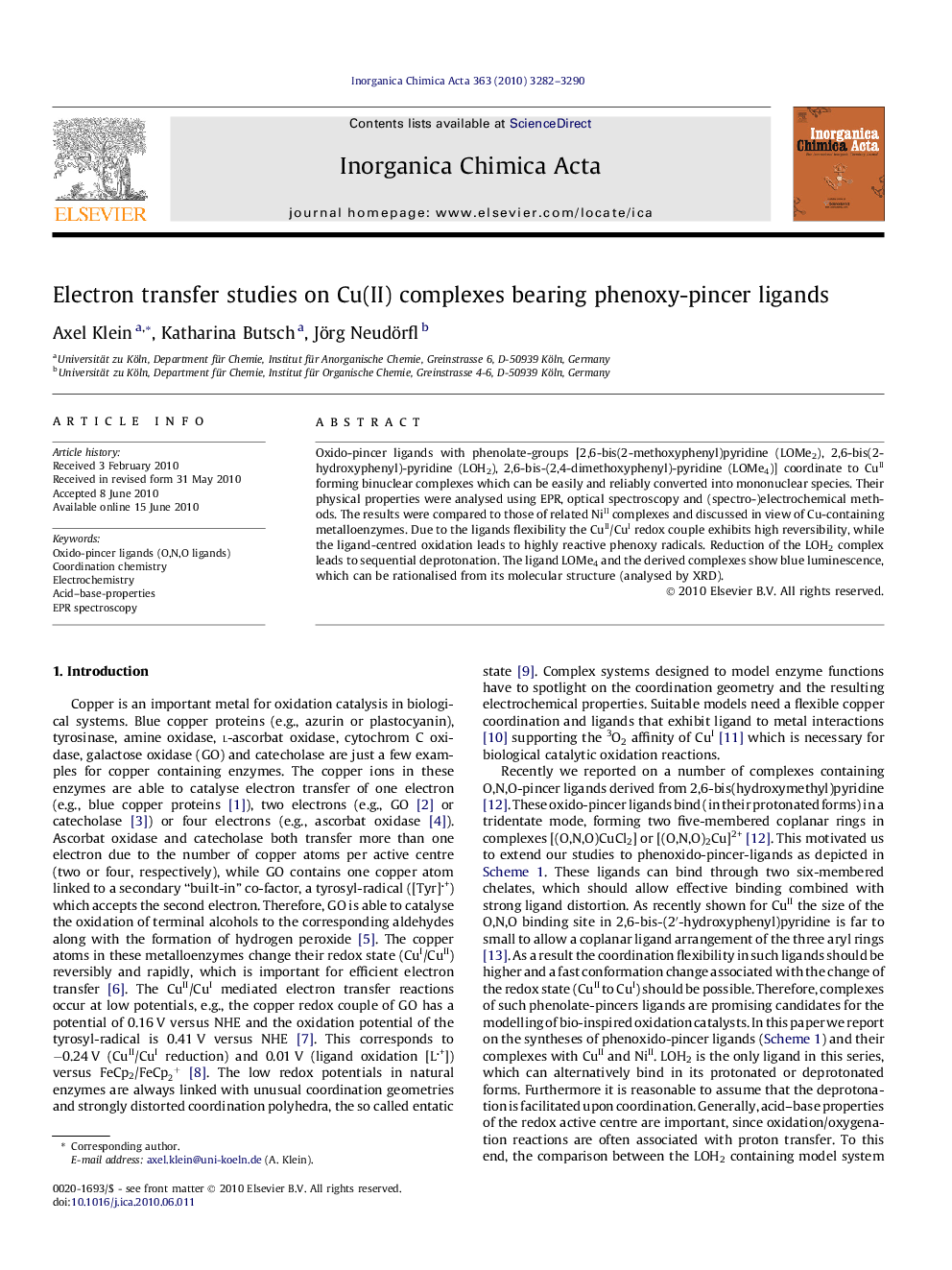| Article ID | Journal | Published Year | Pages | File Type |
|---|---|---|---|---|
| 1311171 | Inorganica Chimica Acta | 2010 | 9 Pages |
Oxido-pincer ligands with phenolate-groups [2,6-bis(2-methoxyphenyl)pyridine (LOMe2), 2,6-bis(2-hydroxyphenyl)-pyridine (LOH2), 2,6-bis-(2,4-dimethoxyphenyl)-pyridine (LOMe4)] coordinate to CuII forming binuclear complexes which can be easily and reliably converted into mononuclear species. Their physical properties were analysed using EPR, optical spectroscopy and (spectro-)electrochemical methods. The results were compared to those of related NiII complexes and discussed in view of Cu-containing metalloenzymes. Due to the ligands flexibility the CuII/CuI redox couple exhibits high reversibility, while the ligand-centred oxidation leads to highly reactive phenoxy radicals. Reduction of the LOH2 complex leads to sequential deprotonation. The ligand LOMe4 and the derived complexes show blue luminescence, which can be rationalised from its molecular structure (analysed by XRD).
Graphical abstractOxido-pincer ligands with phenolate-groups [2,6-bis(2-methoxyphenyl)pyridine (LOMe2), 2,6-bis(2-hydroxyphenyl)-pyridine (LOH2), 2,6-bis-(2,4-dimethoxyphenyl)-pyridine (LOMe4)] coordinate to CuII forming binuclear complexes which can be easily and reliably converted into mononuclear species. Their suitability as models for entatic copper atoms is analysed using optical spectroscopy, electrochemical (CV), spectroelectrochemical methods and emission spectroscopy.Figure optionsDownload full-size imageDownload as PowerPoint slide
